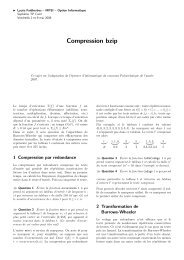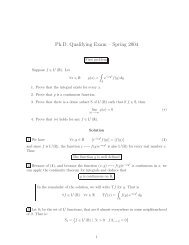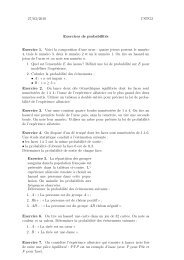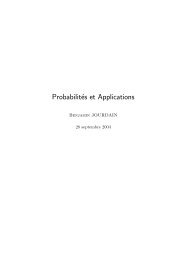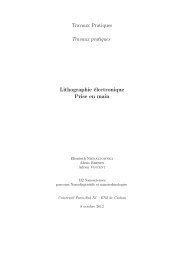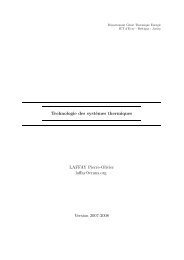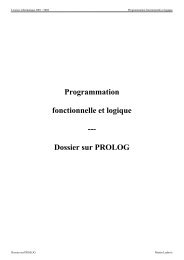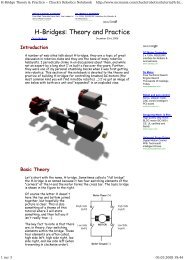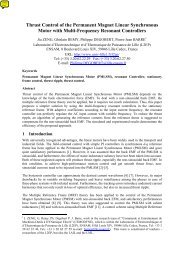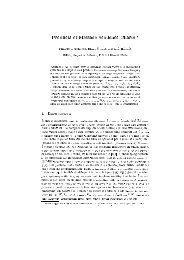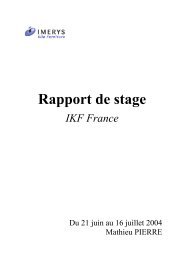A Hybrid Factored Frontier Algorithm for Dynamic Bayesian Networks
A Hybrid Factored Frontier Algorithm for Dynamic Bayesian Networks
A Hybrid Factored Frontier Algorithm for Dynamic Bayesian Networks
You also want an ePaper? Increase the reach of your titles
YUMPU automatically turns print PDFs into web optimized ePapers that Google loves.
Step 2: We then compute a set S t+1 of at most σ spikes using M t+1 as follows.We want to consider as spikes u ∈ V n where M t+1 (i, u i ) is large <strong>for</strong> every i. To do so, we find aconstant η t+1 such that M t+1 (i, u i ) ≥ η t+1 <strong>for</strong> every i <strong>for</strong> a subset of V n containing σ elements and <strong>for</strong>all other u ′ , there exists i with M t+1 (i, u ′ i ) < ηt+1 . We compute η t+1 via binary search. First we fix theprecision with which we want to compute η t+1 to be ξ (we choose ξ = 10 −6 , which implies 20 iterations ofthe loop described below). The search <strong>for</strong> η t+1 proceeds as follows:– η 1 = 0 and η 2 = 1.– While η 2 − η 1 > ξ do1. η = η 1+η 22.2. Set a i to be the number of values v with M t+1 (i, v) > η.3. Set U i to be this set of values.4. If ∏ i (a i) > σ then η 1 = η; otherwise η 2 = η– endwhile– Return η t+1 = η 2 and S t+1 = ∏ i U iStep 3:Finally, we compute B t+1H(u) <strong>for</strong> each u in St+1 as follows.B t+1H(u) = ∑ (B t (v) × ∏v∈S t iCit+1 (u i | vî))4.2 Analysis of the <strong>Hybrid</strong> FFOne can establish the following properties of our algorithm. We refer the reader to the full paper [18] <strong>for</strong>the details.Proposition 1. 1. For σ = 0, the hybrid FF algorithm is the same as FF and <strong>for</strong> σ = K n , it is the exactalgorithm.2. B t is a belief state <strong>for</strong> every t.3. Suppose P t = B t . Then P t+1 (v) = M t+1 (i, v) <strong>for</strong> every i, v.4. The time complexity of hybrid FF is O(T · n · (σ 2 + K R+1 )), where T is the number of time points, nis the number of variables, σ is the number of spikes, K = |V | and R is the maximum in-degree of theDBN.We recall the time complexity of FF is O(n · K R+1 ) and hence the additional computational ef<strong>for</strong>t requiredby HFF is O(T · n · σ 2 ). However, in our applications HFF will be run as an off-line computationwhere in one sweep, the required in<strong>for</strong>mation about the belief states can be gathered. Where repeated executionsare required, such as <strong>for</strong> combinations of parameter values that best match experimental data ( [15])one can initially run FF repeatedly to narrow down the range of possibilities and then run HFF once to getan accurate estimate.The error analysis <strong>for</strong> hybrid FF proceeds along the lines <strong>for</strong> FF presented in the previous section. Theone step error, can be bounded from above by ɛ ′ 0 with ɛ′ 0 ≤ min{(1 − α), η}, where α = min t(α t ) andη = max t (η t ). In particular, if σ ≥ 1, then η ≤ 1/2 and thus ɛ ′ 0 ≤ 1/2.The cumulative error at t is then given by: ∆ ′t ≤ ɛ ′ 0 (∑ tj=0 βj ) where β is as specified in the previoussection. Thus, the worst case error is better than the one <strong>for</strong> FF, and can be much better if α is large enoughor η small enough, which we can monitor on the fly.6



